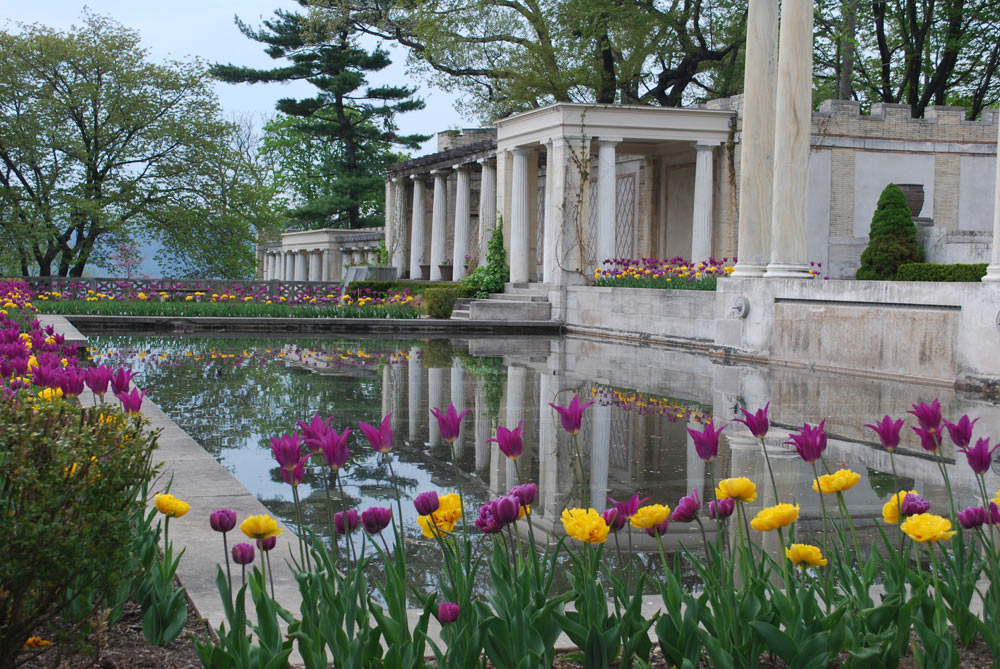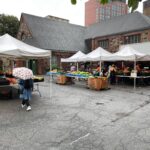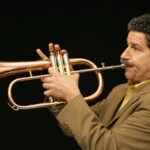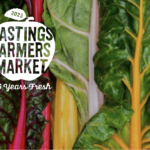Gardens of the Hudson Valley
From hillsides of daffodils at Sunnyside to rows of tulips at Empire State Park in Albany, public gardens reflecting 200 years of landscaping styles have the Hudson River Valley National Heritage Area awash in color and bloom from spring until fall frost. Presidents, industrialists, naturalists and artists have long called the Hudson Valley home and most have enhanced the region’s richly textured natural landscape. Today, visitors can enjoy some of the country’s most stunning gardens in this majestic river valley, including the sampling described below.
Starting to the north in New York’s capital, Academy Park in front of Albany City Hall was designed to celebrate the tri-centennial of the city. This small horticultural jewel includes 225 evergreen cultivars and 90 companion plants, as well as a native wildflower garden. Among one hundred New York State species are jack-in-the-pulpit, columbine, skull cap, asters and sunflowers, providing a feast of color to delight the eye.
Mountain Top Arboretum in the town of Tannersville offers visitors the pleasure of a labor of love. Peter and Bonnie Ahrens have brought plants from all corners of the world, including eight varieties of flowering crab apples, eight types of mountain ash, flowering shrubs and yellow and red-twigged dogwoods. The arboretum also boasts rock gardens; a pond full of aquatic plants and walking trails through nearby woods in the glorious Catskill Mountains.
Just south of the town of Hudson, artist Frederic Edwin Church’s home, Olana, stands 500 feet above the Hudson. Believing that Olana was his greatest masterpiece, Church created carriage trails and surprise vistas to delight his guests. The gardens around the house were started in 1880 by his wife and are scattered with old roses, peonies, cosmos, bee balm, nasturtiums, dahlias and sweet alyssum. The meadows sloping gracefully down toward the river are a carpet of wildflowers inibloom from early spring through autumn.
Montgomery Place, in Annandale-on-Hudson, was described in 1866 by writer Benson Lossing as “the most perfect in its beauty and arrangements … one of the most beautiful of the ornamental gardens in this country.” The preeminent landscape designer of the time, Andrew Jackson Downing, declared the estate was “nowhere surpassed in America in point of location, natural beauty or landscape gardening charms.” Early 20th-century gardens include an oval reflecting pool, rose and herb gardens, and brick pathways leading visitors from one glorious horticultural feast to another.
In Hyde Park, the garden enthusiast can enjoy spectacular roses at the 600-acre estate of Frederick William Vanderbilt and at Springwood, the family home of President Franklin D. Roosevelt. The gardens of these estates have been maintained in their original designs, boasting rare species as well as perennial favorites in abundance. A special treat is the Beatrix Farrand Garden at Bellefield, designed in 1912 in the Beaux Arts style and just recently restored and opened to the public.
Millbrook boasts two exceptional gardens that are well worth a short drive east of the river. Innisfree, named for Yeats’ Irish “isle of peace,” is a 200-acre landscape that encourages visitors to meander around a small lake, in and out of charming garden experiences. Cary Arboretum offers a profusion of flowering plants of every color and description: perennials, lilacs, roses, peonies, rhododendrons, day lilies and herbs, just to name a few.
At Storm King Art Center in Mountainville more than four hundred acres of fields and woodlands provide a dramatic setting for over 120 works of contemporary sculpture. Visitors are free to roam through this unique, outdoor gallery overflowing with rhododendron, wildflowers and works by artists such as David Smith, Alexander Calder, Mark di Suvero, Alexander Liberman, Alice Aycock, Louise Nevelson, Henry Moore, Kenneth Snelson and Isamu Noguchi.
At Boscobel Restoration in Garrison, weeping cherry trees and tulips bloom in May, followed in June by the flowering of 300 rose bushes, including many old varieties. As if all that were not enough, an opening at the far end of the rose garden frames a splendid view of the Hudson across to West Point.
The Long Walk at Van Cortlandt Manor in Croton-on-Hudson provides a floral treat, mixed with the history of one of New York’s oldest families. Spring visitors stroll between blossoming lilacs and apple trees that compete for attention with extensive beds of daffodils, tulips and hyacinths.
In April, the hillsides at Washington Irving’s Sunnyside in Tarrytown are awash with daffodils, under apple trees that are heavy with bloom. The famous author once quipped that his nieces feared for their well being as the wisteria vines, which drip purple blossoms all over the front of the house in June, threatened to take over the entire estate.
Spanning many generations, the lure and appeal of flowers and gardens in New York’s Hudson Valley cross all borders and time. Enjoyed in their historical context, they create one of the most fascinating and beautiful series of gardens in the world. From hedgerows and river vistas, to antique roses, lilacs, tulips, daffodils and dogwood, the Hudson River Valley is a riot of bloom and fragrance that knows no equal.

Hudson River Valley Public Gardens and Landscapes
An Exquisite Journey of Color and Fragrance From South to North
Untermyer Gardens
945 North Broadway
Yonkers, NY
Untermyer Gardens was built by Samuel Untermyer in 1917 and was called "America's Most Spectacular Garden" in the 1920's. The Walled Garden is the finest Persian Garden in the Western Hemisphere. The Temple of Love, with its five waterfalls and six cataracts, is breathtaking. The Vista is the most monumental feature of the garden, framed by two ancient Roman columns 2000 years old. Guided tours are available every Sunday from late April through October, alternating between history focused and garden focused and once a month there is a premium President's tour. The full tour schedule is on the website. All tours are appropriate for all audiences. No reservations are needed. The tours start behind the Community Center next to the parking lot. Wear sturdy closed toe shoes and bring water.
The Donald M. Kendall Sculpture Gardens at PepsiCo World Headquarters
700 Anderson Hill Road
Purchase, NY 10577
(914) 253-2000
Horticulture and sculpture create a unique series of visual experiences on 112 acres of walking paths, lakes and fountains. The gardens are open to the public free of charge from 10 a.m. to 4 p.m. on Saturdays and Sundays through the end of October. For more information, go to www.pepsico.com/sculpture-gardens. There is also a PepsiCo DMK Sculpture Garden app available for free from the App Store.
Sunnyside
Route 9
Tarrytown, NY 10591
(914) 591-8763
Home of Washington Irving is the earliest surviving example of the nineteenth century Romantic landscape movement in the Hudson Valley, with hillsides of daffodils in early spring, a pond and brook that leads to Irving’s “cottage,” dripping with wisteria blooms in June. Admission.
Lyndhurst
635 South Broadway
Tarrytown, NY 10591
(914) 631-4481
67-acre landscape includes magnificent specimen trees, sweeping lawns, river vistas and an original rose garden that flourishes with more than a hundred varieties of roses. Admission.
Philipsburg Manor, Upper Mills
Route 9
North Tarrytown, NY 10591
(914) 631-3992
The kitchen garden at Philipsburg Manor is planted with 80 species of herbs and vegetables popular in the 1700s. The nearby orchard contains varieties of apple, pear and cherry trees. Admission.
Kykuit, (the Rockefeller Estate)
Pocantico Hills, NY
(914) 631-9491
Spectacular views of the Hudson are framed by Nelson Rockefeller’s sculpture garden featuring Brancusi, Moguchi, Giacometti, Calder, Moore, Maillol and many others. Formal gardens, fountains, pools and a rose garden. Tours leave from Philipsburg Manor, Route 9, Tarrytown. Admission.
Van Cortlandt Manor
South Riverside Avenue
Croton-on-Hudson, NY 10520
(914) 271-8981.
The “Long Walk,” a brick path bordered by gardens and orchards typical of the late 1700 and early 1800s, is lined with over 100 species of flowering plants. Admission.
Wild Flower Island, Teatown Lake Reservation
Spring Valley Road
Ossining, NY 10562
(914) 762-2912
Accessible by a boardwalk out into Teatown Lake, Wild Flower Island blooms every season with over 300 native and endangered species of wild flowers. Guided tours are available by advance reservation from mid-April through September. Admission.
Caramoor Center for Music and the Arts
Girdle Ridge Road
Katonah, NY 10536
(914) 232-5035
A “Sense Circle” includes species that appeal to all of the senses. The Cedar Walk leads through a shady grove of ferns and rhododendrons to a walled sunken garden filled with roses, perennials and annuals. Admission.
Hammond Museum & Sculpture Garden
Deveau Road
North Salem, NY 10560
(914) 669-5033
Enjoy a stroll through a three-acre Japanese garden, lunch at an outdoor café and special events throughout the season. Admission.
Manitoga
Route 9D
Garrison, NY 10524
(845) 424-3812
“Place of the great spirit,” was designed by industrial designer Russel Wright as a 75 acre summer retreat. Walking trails, ecological landscape, native plants, quarry pond, framed views. Admission.
Boscobel Restoration
Route 9D
Garrison-on Hudson, NY 10524
(845) 265-3638
A brick walkway leads past apple and quince trees, an extensive herb garden and perennial beds, to a formal rose garden that opens onto a great lawn with sweeping views of the Hudson River. The Woodland Trail offers a one-mile walk by a stream and waterfall, with a gazebo for picnics overlooking Constitution Marsh. Admission.
Stonecrop Gardens
Route 301
Cold Spring, NY 10516
(845) 265-2000
Created by Frank and Ann Cabot, Stonecrop is one of the most interesting public gardens in the northeast, standing 1,100 feet above the river in the Hudson Highlands. Includes over 500 species of Alpines; a 2,000 square foot conservatory; an English-style flower garden with a central vegetable parterre and a collection of perennials as diverse as the New York Botanical Garden -- all in 63 acres. Admission.
Locust Grove
Samuel Morse Historic Site
2683 South Road (Route 9)
Poughkeepsie, NY 12601
(845) 454-4500
Grounds reflect the Romantic period and include the “geometric garden,” a parterre of colorful annuals on the south side of the mansion which was designed by Alexander Jackson Davis. The main garden displays beds of peonies, roses, irises and other perennials. Grounds admission free.
Vassar Arboretum
Vassar College
Poughkeepsie, NY 12604
(845) 437-7000
The campus contains a diverse collection of specimen trees, plus a boardwalk through a native plant preserve. The Shakespeare Garden, planted in 1916 by students of Shakespeare and botany and later remodeled along the lines of a traditional English flower garden, features old roses, clematis, peonies, herbs, heathers, and other perennials. Admission free.
Roosevelt Homes: Springwood & Val-Kill
Home of Franklin D. Roosevelt National Historic Site
Route 9
Eleanor Roosevelt National Historic Site
Route 9G
5119 Albany Post Road
Hyde Park, NY 12538
(845) 229-9115
At Springwood, the original hemlock hedge encloses the Roosevelt rose garden, now over a century old with 28 varieties of roses bordered by tulips, peonies and annuals.Val-Kill maintains a small rose garden and large cutting garden. Mrs. Roosevelt believed that flowers “carry a message of beauty which we can share the world over.” Grounds admission free.
Beatrix Farrand Garden at Bellefield
Adjacent to the FDR Home
Route 9
P.O. Box 315
Hyde Park, NY 12538
(845) 229-9115
One of the nation’s finest landscape architects, Beatrix Farrand designed this enclosed formal garden and surrounding wild garden in 1912. A walk through its gates affords a glimpse of Farrand’s virtuoso talents and a view into the great country house era of turn-of-the-century America. Admission free.
Vanderbilt Mansion National Historic Site
Route 9
Hyde Park, NY 12538
(845) 229-9115
At the home of Frederick William Vanderbilt, eight terraced levels of plantings are framed by walls and red brick planted with perennials, including wall cress, columbine, blue Virginia cowslip, mountain bluets, and Oriental poppies. A sizable rose garden constructed in 1910 is devoted to an array of hybrid roses. The cherry tree walk and pool garden has 4,000 perennial plants; the rose garden, more than 1,000 bushes. Grounds admission, free.
Innisfree
Tyrrel Road
Millbrook, NY 12545
(845) 677-8000
Named for Yeats’s Irish “isle of peace, Innisfree Garden is a unique contribution to garden art in America. The design is inspired by a Chinese style dating back 1,000 years. From grassy areas to paths leading through rustic wisteria arches, there are surprising pictures throughout including a series of gardens built on the terraced foundations of an old mansion. Everywhere along the trail, rustic chairs and benches are placed to encourage visitors to pause and savor the views of trees, rocks, wildflowers and a 40-acre lake. Admission.
Wethersfield
Pugsley Hill Road
Amenia, NY 12501
(845) 373-8037
Modeled after villa gardens of the Italian Renaissance with trimmed specimens and hedges in different shades of green accented by sculptures, pavilions, fountains and framed views of rolling farmlands and woods. Includes a water garden and long grassy allee of arborvitaes clipped into solid walls of greenery 23 feet high, and four small knot gardens. Admission free.
Montgomery Place
River Road, Route 103
Annandale-on-Hudson, NY 12504
(845) 758-5461
One of the most richly varied of any of the river’s great country seats on 434 acres includes: Woodland gardens; an Ellipse framed by dark hemlocks and an oval pool planted with water lilies, irises, day lilies and a single flowering dogwood; a rose garden with symmetrical beds and old fashioned varieties, arranged by color; an herb garden with over 40 varieties of herbs; and decorative perennial borders. Admission.
Clermont
1 Clermont Ave.
Clermont, NY 12526
(518) 537-4240
Above the “Long Walk “which looks over a spectacular southern view of the Hudson is Lilac Walk, where a collection of old species puts on a fragrant show each may and grassy slopes are blanketed with day lilies later in the summer. The gardens, developed in the 1930s, include a walled perennial garden in the English tradition, a wooded “wilderness” garden with wild flowers and bulbs and an upper cutting garden of peonies, roses, irises, and zinnias. Admission.
Olana
Olana State Historic Site, R.D. 2
Hudson, NY 12534
(518) 828-0135
Home of Hudson River School artist Frederic Edwin Church. The 250 acres include the scatter garden his wife Isabel planted in the 1880s with old roses, peonies, cosmos, bee balm, torenias, nasturtiums, dahlias, cleomes, phlox, sweet alyssum and marigolds. Below the garden sloping meadows are blanketed in wild flowers from spring through fall. At the foot of the hill is an orchard of flowering apple trees and a lake. Grounds admission free.
Storm King Art Center
Old Pleasant Hill Road
Mountainville, NY 10953
(845) 534-3190
Five hundred acres of fields and woodlands are the backdrop for Storm King’s collection of 120 contemporary sculptures, created by leading artists from 1945 on. Beautiful in all weather. Admission.
Mohonk Mountain House
Mohonk Lake
New Paltz, NY 12561
(845) 255-1000 or (800) 772-6646
2,200 acres plus surrounding 5,000 acres of the Mohonk Preserve offering 85 miles of hiking trails. The gardens, begun in 1883, include the Show Garden, ablaze with color from late May through fall. 75 beds feature annuals, biennials reflecting the Victorian era. There is also a rose garden, cutting garden and herb garden as well as a fern/wildflower trail along a small brook through the woods. Admission.
Mountain Top Arboretum
Route 23C
Tannersville, NY 12485
(518) 589-3903
At 2,500 feet the Arboretum boasts 300 species from around the world. There are 8 varieties of flowering crab apples, a dozen varieties of lilacs and 8 types of mountain ashes. There are also groupings of conifers, winterberries, beeches, dawn redwoods, rhododendrons, flowering shrubs and special areas of winter interest devoted to yellow and red-twigged dogwoods and trees chosen for their decorative bark. Admission free.
Washington Park
Between State Street and Madison Avenue, west of Willett Street
Albany
Designed in the late 1860s by Frederick Law Olmstead, Calvert Vaux and their protégés, Washington Park is an urban gem with a 6-acre lake surrounded by a croquet lawn, tropical and aquatic gardens and formal beds in nineteenth century gardenesque style. When the 50,000 tulips fade they are replaced by 50 kinds of annuals providing an old-fashioned blaze of color from spring through fall. Admission free.
Academy Park
Washington Avenue, across from City Hall
Albany
Some call it Albany’s horticultural jewel. The conifer garden has 225 evergreens cultivars and 90 companion plants, plus a native wildflower garden that boasts 100 New York State species. Admission free.



